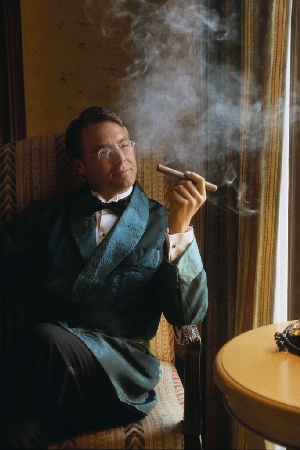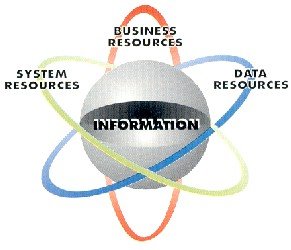- A pastime or an obsession?
 When I go shopping, I'm one of those guys who doesn't like to dicker over price. I want to go in, buy what I want and move along. To me, shopping over the Internet was a Godsend as I can browse at my leisure, compare prices, and order what I want without the hassle of talking to a sales clerk. I don't like to barter, but I know a lot of people who do. My father was a past master of the trade, particularly when it came to cars. When negotiating with a salesman, he treated it like a game as to who could outdo each other. I knew a lot of guys from his generation who liked to shop for cars the way he did. Plain and simply, it was the love of the joust they relished. Although my father would get the price down, I couldn't help but believe in the end, the salesman had the last laugh. As for me, such shenanigans are a waste of time.
When I go shopping, I'm one of those guys who doesn't like to dicker over price. I want to go in, buy what I want and move along. To me, shopping over the Internet was a Godsend as I can browse at my leisure, compare prices, and order what I want without the hassle of talking to a sales clerk. I don't like to barter, but I know a lot of people who do. My father was a past master of the trade, particularly when it came to cars. When negotiating with a salesman, he treated it like a game as to who could outdo each other. I knew a lot of guys from his generation who liked to shop for cars the way he did. Plain and simply, it was the love of the joust they relished. Although my father would get the price down, I couldn't help but believe in the end, the salesman had the last laugh. As for me, such shenanigans are a waste of time.
"Horse trading," as we still refer to it, is still a lively pastime. I've got friends who actively engage in it and their goal is to always "trade up" for something better. For example, I have seen them start with a bicycle, trade it up for a chain saw, to a scooter, to a motorcycle, to a camper, to a car, and finally to a boat. It takes them a bit of time to go through the process and requires them to fix and cleanup the current commodity du jour, but they thoroughly enjoy the game. True, they're ultimately making some money in the end, but they're also spending money cleaning and fixing up the merchandise as well as devoting considerable time to their hobby. The one thing I've learned about these people is they do not form any attachments to their property. They will wheel and deal in all of their material possessions, even pets and livestock. I don't know if these people are to be envied or pitied for their obsession, but they certainly seem to enjoy it.
I am also not one of those guys who longs to go shopping at a mall for an afternoon. Frankly, I think I would rather have a prostate examination instead. I marvel at how people can do this as much as they do, particularly before Christmas. Women shoppers amaze me as they methodically go in and out of stores, examining merchandise, trying on clothes, and buying nothing. It's kind of like watching an ant canvass an area scrounging for food.
I have a female friend who I would classify as a professional shopper. She knows where virtually everything is in the city she lives, and makes routine rounds around town in a constant search for the lowest prices and latest sales. She has done this so often, all of the sales clerks in town know her on a first name basis. Each time she goes out, she is compelled to buy something. If you were to visit her home you would find racks of clothes which still have the price tags on them. Interestingly, just about everything she buys is returned. As an aside, her monthly credit card statements read like "War and Peace" with numerous pages of debits and credits, yet the monthly balance always ends up at zero. You would think such shopping madness would get tiresome. Surprisingly, it does not. It is the love of the hunt that drives her just as much as "horse trading" does for my other friends.
I have heard the act of shopping called everything from a hobby to an obsession, to a disease or some form of addiction. For those obsessed with it, Psychiatrists have a name for it, Compulsive Buying Disorder (CBD) which can be treated by medication and support groups. Interestingly, CBD is found in approximately 6% of the American populace, 80% of which are female.
Aside from CBD, I think what drives shoppers more than anything is the incentive of financial rewards. Other than this, I cannot see any enjoyment in shopping for its own sake, regardless of how the store is decorated or its friendly service. If you are shopping just to occupy your time, you must be a glutton for punishment.
As for me, while everyone else is at the mall, I'll be sitting at the beach quietly reading a good book. It sure beats a prostate examination (or shopping).
Originally published: April 23, 2010
Keep the Faith!
Note: All trademarks both marked and unmarked belong to their respective companies.
 Tim Bryce is a writer and the Managing Director of M&JB Investment Company (M&JB) of Palm Harbor, Florida and has over 30 years of experience in the management consulting field. He can be reached at timb001@phmainstreet.com
Tim Bryce is a writer and the Managing Director of M&JB Investment Company (M&JB) of Palm Harbor, Florida and has over 30 years of experience in the management consulting field. He can be reached at timb001@phmainstreet.com
For Tim's columns, see:
timbryce.com
Like the article? TELL A FRIEND.
Copyright © 2015 by Tim Bryce. All rights reserved.
NEXT UP: BED BUGS & OUR CHANGING WORLD - What is the true cause of our changing world and what can be done about it?
LAST TIME: THE JEWISH VOTE - Are American Jews being taken for granted by the Democratic Party?
Listen to Tim on WJTN-AM (News Talk 1240) "The Town Square" with host John Siggins (Mon, Wed, Fri, 12:30-3:00pm Eastern); WZIG-FM (104.1) in Palm Harbor,FL; and KIT-AM 1280 in Yakima, Washington "The Morning News" with hosts Dave Ettl & Lance Tormey (weekdays. 6:00-9:00am Pacific). Or tune-in to Tim's channel on YouTube.
 Throughout the 20th century and into the 21st, Jewish American voters gravitated to Democratic causes and candidates. This is probably due to the social programs they support. In the 2008 presidential election, 78% of Jews voted for Barack Obama and 68% in the 2012 elections. Historically, their passion has been liberal programs and support for the Israeli state.
Throughout the 20th century and into the 21st, Jewish American voters gravitated to Democratic causes and candidates. This is probably due to the social programs they support. In the 2008 presidential election, 78% of Jews voted for Barack Obama and 68% in the 2012 elections. Historically, their passion has been liberal programs and support for the Israeli state.
 I have always had a fondness for the game of baseball. As a kid, I played Little League but also carried my glove and bat with me just about everywhere for a quick pickup game whether it was before or after school, or during recess. Growing up in Connecticut, I followed the early 1960's Yankees and vividly remember when the Mets were introduced. As we moved around the country I became a fan of the Los Angeles Dodgers, the Chicago Cubs, and finally watched the emergence of the Big Red Machine in Cincinnati. Frankly, I do not believe we will ever see another team as good as the 1976 Reds. They were very special.
I have always had a fondness for the game of baseball. As a kid, I played Little League but also carried my glove and bat with me just about everywhere for a quick pickup game whether it was before or after school, or during recess. Growing up in Connecticut, I followed the early 1960's Yankees and vividly remember when the Mets were introduced. As we moved around the country I became a fan of the Los Angeles Dodgers, the Chicago Cubs, and finally watched the emergence of the Big Red Machine in Cincinnati. Frankly, I do not believe we will ever see another team as good as the 1976 Reds. They were very special.
 In March of this year, Gallup produced a study titled,
In March of this year, Gallup produced a study titled,  I have had many friends who have asked for prayers for a loved one, usually someone in sickness and distress, such as someone about to undergo surgery, a failing parent, or a young person fighting an addiction. My Christian and Jewish friends are quick to respond to offer their support, but I do not hear too much from agnostics. On more than one occasion I have heard from the people seeking support adamantly claim, "Prayer works!"
I have had many friends who have asked for prayers for a loved one, usually someone in sickness and distress, such as someone about to undergo surgery, a failing parent, or a young person fighting an addiction. My Christian and Jewish friends are quick to respond to offer their support, but I do not hear too much from agnostics. On more than one occasion I have heard from the people seeking support adamantly claim, "Prayer works!"
 I recently attended a meeting at the Disney World complex near Orlando. Actually, it was held at a Hilton Hotel, a non-Disney property operating in the complex. Although I've been to Orlando many times, I haven't been to Disney since the kids were little. I don't have a GPS in my car, so, to make sure I knew where I was going, I printed a map from the Internet which I assumed was accurate and the directions looked familiar to me. Normally, it takes me about an hour and a half to drive from Tampa to Disney, but on this particular evening it took over three hours. No, there weren't any accidents, no heavy traffic, no construction, no obnoxious drivers to follow; just Disney.
I recently attended a meeting at the Disney World complex near Orlando. Actually, it was held at a Hilton Hotel, a non-Disney property operating in the complex. Although I've been to Orlando many times, I haven't been to Disney since the kids were little. I don't have a GPS in my car, so, to make sure I knew where I was going, I printed a map from the Internet which I assumed was accurate and the directions looked familiar to me. Normally, it takes me about an hour and a half to drive from Tampa to Disney, but on this particular evening it took over three hours. No, there weren't any accidents, no heavy traffic, no construction, no obnoxious drivers to follow; just Disney.
 Many years ago when I was a lad, my friends and I would put pennies on railroad tracks. We would hide and wait for a massive freight train to flatten them into a shiny, paper-thin strips of copper with Lincoln's face still visible. We would then have a lucky token or something to exchange, such as for baseball cards or candy. Thus began my love affair with trains.
Many years ago when I was a lad, my friends and I would put pennies on railroad tracks. We would hide and wait for a massive freight train to flatten them into a shiny, paper-thin strips of copper with Lincoln's face still visible. We would then have a lucky token or something to exchange, such as for baseball cards or candy. Thus began my love affair with trains.
 I have enjoyed Chinese food since my youth. As I grew older I gravitated to Szechuan style cooking which is spicy hot. When I travel though, I like to frequent Chinese restaurants as they are located just about everywhere on the planet and, as such, I look upon them as a litmus test of the community I am visiting.
I have enjoyed Chinese food since my youth. As I grew older I gravitated to Szechuan style cooking which is spicy hot. When I travel though, I like to frequent Chinese restaurants as they are located just about everywhere on the planet and, as such, I look upon them as a litmus test of the community I am visiting.
 I have always been of the opinion that you shouldn't trust anyone who doesn't have at least one known vice, be it swearing, drinking, smoking, or whatever. If they appear to be overly virtuous, then they are probably hiding something much more malicious. I remember one fellow from Toledo who went to great lengths to project a Lilly-white image. He regularly attended church, could quote chapter and verse from the Bible, and condemned anyone for any form of indiscretion. You would have believed such a person would be trustworthy, honest and forthright. Frankly, I found him to be one of the most ruthless and unscrupulous businessmen I ever had the displeasure to meet, not to mention an extreme bore. I have challenged this rule about vice over the years and found it to hold true time and again.
I have always been of the opinion that you shouldn't trust anyone who doesn't have at least one known vice, be it swearing, drinking, smoking, or whatever. If they appear to be overly virtuous, then they are probably hiding something much more malicious. I remember one fellow from Toledo who went to great lengths to project a Lilly-white image. He regularly attended church, could quote chapter and verse from the Bible, and condemned anyone for any form of indiscretion. You would have believed such a person would be trustworthy, honest and forthright. Frankly, I found him to be one of the most ruthless and unscrupulous businessmen I ever had the displeasure to meet, not to mention an extreme bore. I have challenged this rule about vice over the years and found it to hold true time and again.
 In my nearly 40 years through the Information Technology field (IT), I have come to realize the practitioners in this industry suffer from acute myopia regarding their work. Programmers tend to believe their part of the puzzle is the most important, as do business process analysts, data base analysts, network analysts, project managers, enterprise analysts, etc. True, each has an important role to play, but very few people comprehend the big picture, which is why their work is fragmented and lacks harmony. Few companies understand their business from a global perspective, such as the location of all of their business units, the business functions involved, the organizational structure, the human and machine resources, the systems and business processes, programs, data resources, not to mention the information requirements needed to run the business. In a perfect world, these components would all be cataloged and cross-referenced to minimize data and work redundancy and promote systems integration. This is what I refer to as Information Resource Management (IRM) or the "View of the enterprise from 50,000 feet."
In my nearly 40 years through the Information Technology field (IT), I have come to realize the practitioners in this industry suffer from acute myopia regarding their work. Programmers tend to believe their part of the puzzle is the most important, as do business process analysts, data base analysts, network analysts, project managers, enterprise analysts, etc. True, each has an important role to play, but very few people comprehend the big picture, which is why their work is fragmented and lacks harmony. Few companies understand their business from a global perspective, such as the location of all of their business units, the business functions involved, the organizational structure, the human and machine resources, the systems and business processes, programs, data resources, not to mention the information requirements needed to run the business. In a perfect world, these components would all be cataloged and cross-referenced to minimize data and work redundancy and promote systems integration. This is what I refer to as Information Resource Management (IRM) or the "View of the enterprise from 50,000 feet."
 I recently experienced a "malware" problem on my computer. For those unfamiliar with the term, malware represents a software virus planted on your computer to monitor and track what programs you execute and web sites you visit which is valuable intelligence from an advertising perspective (not to mention a good way to hack into your machine). The only problem is, tracking your every move is illegal to do. Discovery of this problem surprised me as I run what is considered one of the most popular antivirus programs around, yet it allowed this malware virus to infiltrate and blossom on my machine. Consequently, I had to purchase an anti-malware software product which astonishingly identified and eliminated over 500 such malware bugs on my computer. Now I am wondering why I need to maintain my main antivirus product if they cannot identify these annoying bugs.
I recently experienced a "malware" problem on my computer. For those unfamiliar with the term, malware represents a software virus planted on your computer to monitor and track what programs you execute and web sites you visit which is valuable intelligence from an advertising perspective (not to mention a good way to hack into your machine). The only problem is, tracking your every move is illegal to do. Discovery of this problem surprised me as I run what is considered one of the most popular antivirus programs around, yet it allowed this malware virus to infiltrate and blossom on my machine. Consequently, I had to purchase an anti-malware software product which astonishingly identified and eliminated over 500 such malware bugs on my computer. Now I am wondering why I need to maintain my main antivirus product if they cannot identify these annoying bugs.
 I don't think I would make a very good entomologist (someone who studies insects). We have more than our share of critters down here in Florida that I could do without, including a wide variety of spiders, beetles, man-eating mosquitoes, gnats, grubs, ravenous termites, no-see-ums (which are tiny yet very annoying flies that are hard to see until they swarm around your head), and palmetto bugs, which is an endearing name we have invented in the south for "cockroaches."
I don't think I would make a very good entomologist (someone who studies insects). We have more than our share of critters down here in Florida that I could do without, including a wide variety of spiders, beetles, man-eating mosquitoes, gnats, grubs, ravenous termites, no-see-ums (which are tiny yet very annoying flies that are hard to see until they swarm around your head), and palmetto bugs, which is an endearing name we have invented in the south for "cockroaches."